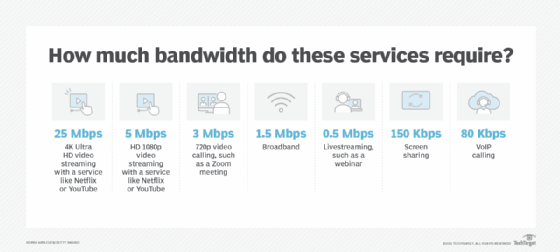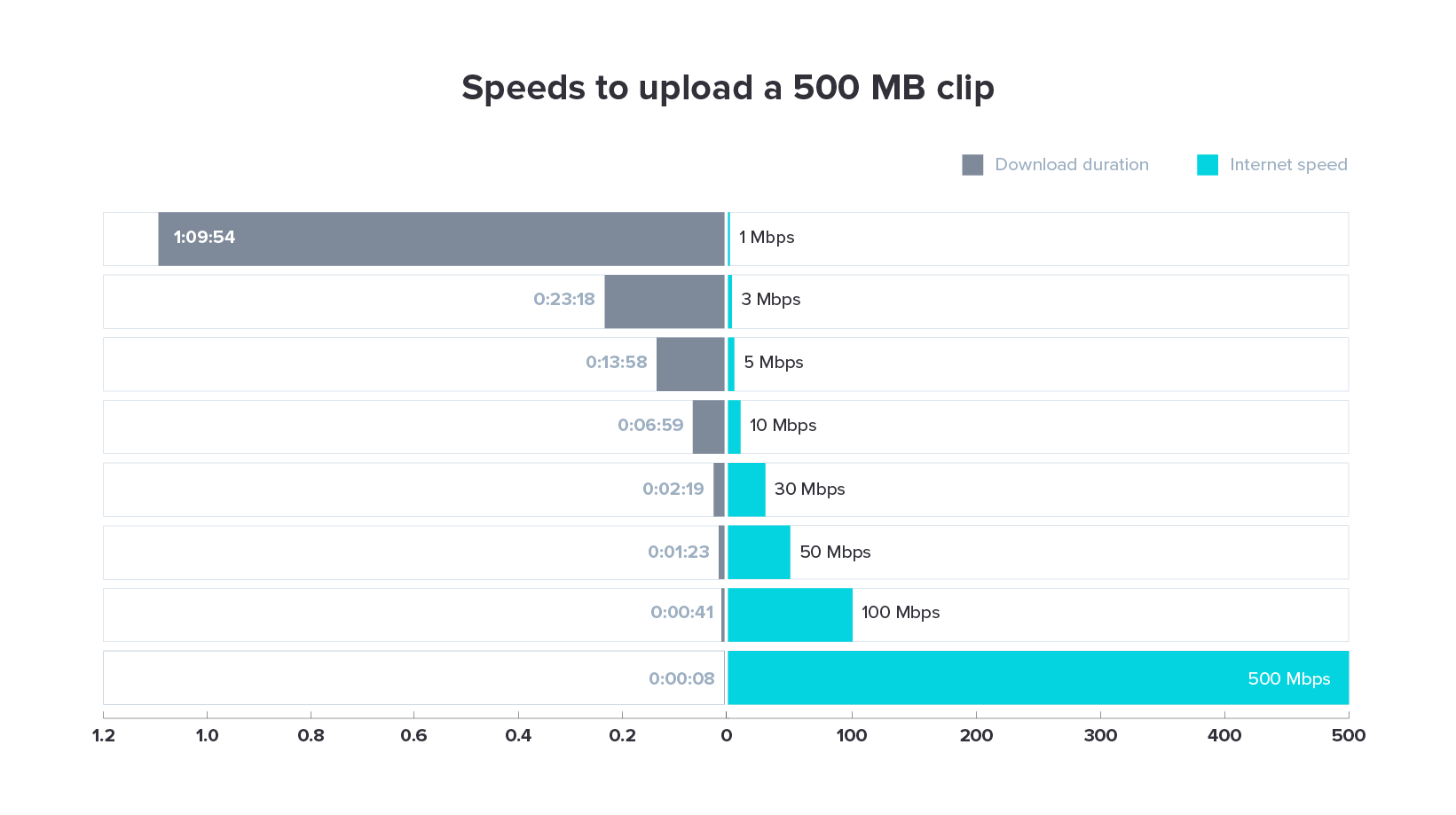The Impact of Megabits Per Second on Streaming High Quality and Performance
The Impact of Megabits Per Second on Streaming High Quality and Performance
Blog Article
How Megabits Per Second Influence Your Online Activities
The principle of megabits per second (Mbps) plays a pivotal function in shaping our on-line experiences. As electronic activities proliferate, recognizing the implications of Mbps on streaming, gaming, and video conferencing ends up being increasingly crucial. Higher Mbps can enhance efficiency and minimize interruptions, while insufficient speeds may promote disappointment and ineffectiveness. Analyzing your house's particular requirements in connection to these speeds is vital, specifically as multiple gadgets try data transfer. The subtleties of how Mbps impacts numerous online activities warrant additional expedition, specifically as our reliance on electronic connection proceeds to progress.
Comprehending Megabits Per Second
When thinking about internet rate, it's important to comprehend the principle of megabits per second (Mbps), which functions as a basic dimension for data transfer prices. This metric measures how much information can be transmitted over a web link in one second, offering a clear understanding of performance capabilities - Megabits Per Second. For context, one megabit is equivalent to one million little bits, and Mbps is frequently used to share data transfer for different online tasks
A greater Mbps indicates a quicker internet link, allowing individuals to execute jobs such as downloading and install data, surfing internet sites, and involving in on the internet gaming more effectively. Common browsing needs around 1-5 Mbps, while streaming high-def video may require 5-25 Mbps. Understanding these needs is important for determining the proper web speed needed for details tasks.
Additionally, the number of tools connected to a network can affect total performance. Numerous individuals streaming, pc gaming, or downloading and install simultaneously can strain offered data transfer, leading to slower speeds - Megabits Per Second. Evaluating personal online practices and needs is important in picking a web plan that straightens with one's requirements, making sure a seamless digital experience
Streaming and Buffering Issues
Streaming high-definition web content has come to be a staple of modern-day online home entertainment, yet it is usually accompanied by annoying buffering concerns. These disruptions can dramatically diminish the watching experience, resulting in frustration and prospective loss of target market involvement. Buffering takes place when the information sent from the streaming service is not obtained swiftly sufficient to keep a smooth playback, frequently as a result of not enough net speed gauged in megabits per second (Mbps)

Additionally, real-time streaming can be influenced by network blockage, which happens when several gadgets share the exact same data transfer. Consequently, optimizing connection speed and making sure appropriate Mbps is important for a seamless streaming experience. As streaming solutions continue to develop, understanding the influence of Mbps on buffering problems remains essential for customers looking for undisturbed home entertainment.
Online Gaming Efficiency
The influence of web rate on online tasks prolongs beyond streaming, substantially influencing online gaming performance. In affordable video gaming, reduced latency and high bandwidth are important for a seamless experience. A fast link minimizes lag, permitting players to react quickly to in-game events, which can be the difference between triumph and loss.
Bandwidth, measured see in megabits per second (Mbps), plays a crucial function in supporting numerous tools and video gaming systems simultaneously. Not enough transmission capacity can bring about dropped connections or lowered video game high quality, negatively impacting gameplay. On-line multiplayer video games call for significant information transfer, especially image source throughout peak gaming hours when various gamers are online.
Hectic first-person shooters require greater rates to keep responsiveness, while turn-based technique games might function moderately well on reduced speeds. As on-line gaming proceeds to evolve, with boosting visual fidelity and more complicated multiplayer environments, the demand for higher Mbps will just increase.
Video Conferencing High Quality
In today's digital landscape, video clip conferencing quality is heavily affected by net speed, particularly in terms of data transfer and latency. High-quality video clip calls require sufficient data transfer to transfer sound and video data seamlessly. Commonly, a minimum of 1.5 Mbps upload and download rates is recommended for typical definition video, while high-definition video conferencing typically requires a minimum of 3 Mbps.
Latency, or the delay between sending and getting data, likewise plays an important role in the user experience. Higher latency can lead to echo, lag, and disjointed communications, which can hinder partnership and involvement throughout meetings.
Moreover, several participants in a video seminar can stress readily available bandwidth, necessitating even higher speeds. Network congestion, typically triggered by synchronised tasks like streaming or downloading, can even more deteriorate video top quality. Thus, for companies relying upon video clip conferencing for remote partnership, recognizing the connection between megabits per total and second interaction high quality is essential for preserving productivity and enhancing online interactions.
Choosing the Right Net Plan
Picking a suitable internet plan is important for making sure optimal performance in various on the internet activities, especially in settings that demand high data transfer, such as video conferencing and online video gaming. Megabits Per Second. When considering an internet plan, it is vital to evaluate both the rate and data allowance to match your certain use requirements
For houses with numerous customers engaging in synchronised activities, a strategy supplying greater megabits per second (Mbps) is recommended. Typically, a minimum of 25 Mbps is ideal for common streaming and browsing, while strategies going beyond 100 Mbps are preferable for more intensive tasks. Furthermore, take into consideration the nature of your online activities; video conferencing needs at the very least 1.5 Mbps upload speed, while on the internet pc gaming might require a lower latency but constant link.
It is also crucial to examine your information cap. Limitless data plans can avoid strangling and disturbances, particularly if heavy usage is anticipated. Last but not least, study solution providers in your location, as availability and prices can differ. By attentively selecting a net strategy customized to your needs, you can enhance your on the internet experience, ensuring smooth, nonstop accessibility to your preferred activities.
Final Thought
In verdict, the value of megabits per second (Mbps) in shaping online tasks can not be overemphasized. A thorough understanding of private or their explanation family Mbps requirements is vital for selecting a suitable net strategy that adequately sustains varied online activities and customer needs.

Typically, a minimum of 25 Mbps is appropriate for standard streaming and surfing, while strategies exceeding 100 Mbps are more suitable for even more extensive tasks. Additionally, consider the nature of your online tasks; video conferencing calls for at least 1.5 Mbps submit rate, while on the internet gaming might need a lower latency however regular connection.
Report this page